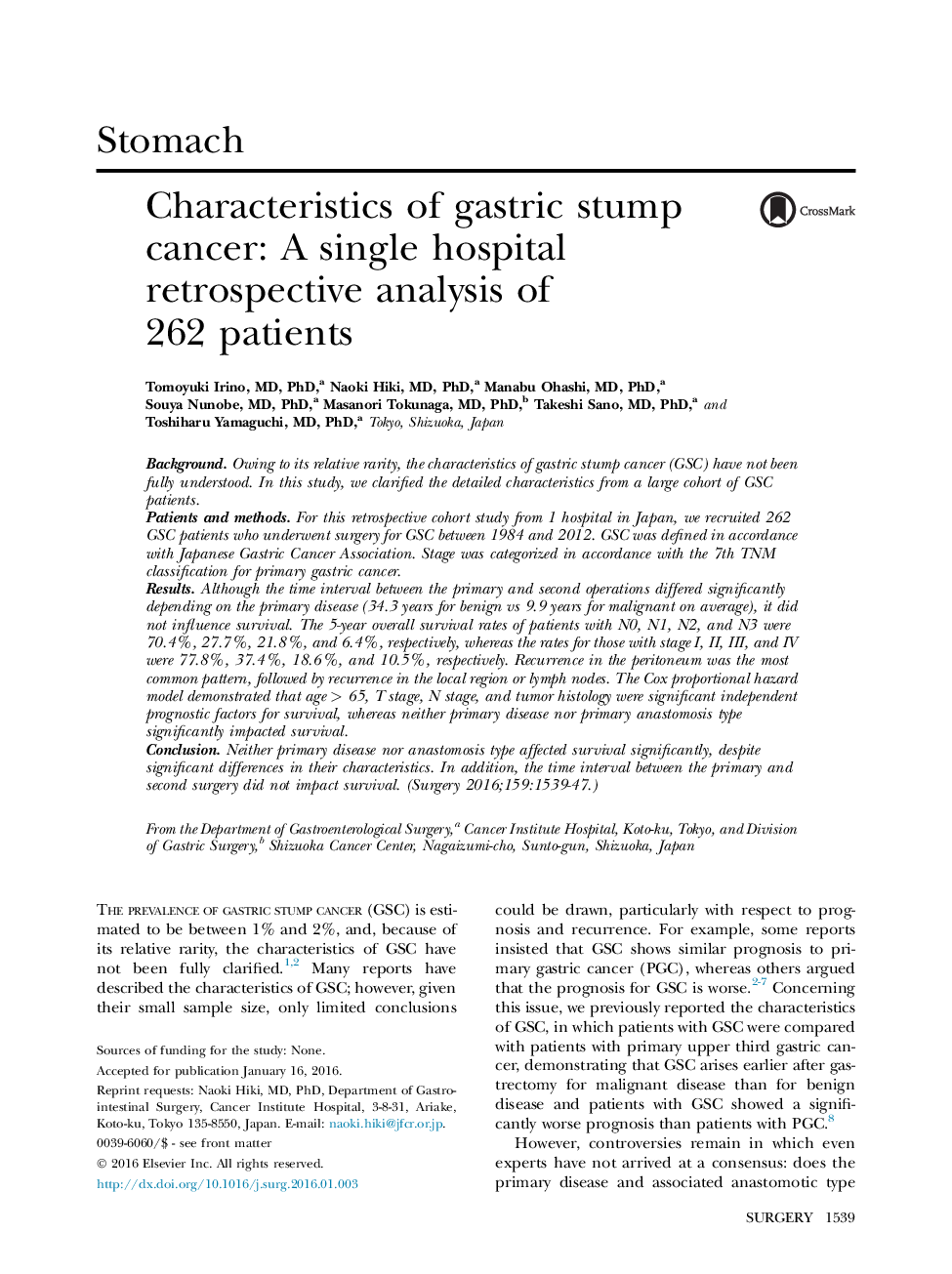| Article ID | Journal | Published Year | Pages | File Type |
|---|---|---|---|---|
| 4306568 | Surgery | 2016 | 9 Pages |
BackgroundOwing to its relative rarity, the characteristics of gastric stump cancer (GSC) have not been fully understood. In this study, we clarified the detailed characteristics from a large cohort of GSC patients.Patients and methodsFor this retrospective cohort study from 1 hospital in Japan, we recruited 262 GSC patients who underwent surgery for GSC between 1984 and 2012. GSC was defined in accordance with Japanese Gastric Cancer Association. Stage was categorized in accordance with the 7th TNM classification for primary gastric cancer.ResultsAlthough the time interval between the primary and second operations differed significantly depending on the primary disease (34.3 years for benign vs 9.9 years for malignant on average), it did not influence survival. The 5-year overall survival rates of patients with N0, N1, N2, and N3 were 70.4%, 27.7%, 21.8%, and 6.4%, respectively, whereas the rates for those with stage I, II, III, and IV were 77.8%, 37.4%, 18.6%, and 10.5%, respectively. Recurrence in the peritoneum was the most common pattern, followed by recurrence in the local region or lymph nodes. The Cox proportional hazard model demonstrated that age > 65, T stage, N stage, and tumor histology were significant independent prognostic factors for survival, whereas neither primary disease nor primary anastomosis type significantly impacted survival.ConclusionNeither primary disease nor anastomosis type affected survival significantly, despite significant differences in their characteristics. In addition, the time interval between the primary and second surgery did not impact survival.
